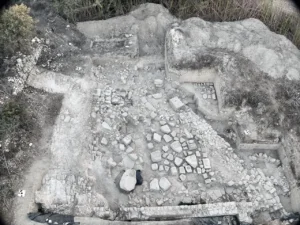How Gion Matsuri Festival is Celebrated in Japan’s Kyoto
Experience Kyoto’s Gion Matsuri in July—month-long floats, lantern-lit nights, street stalls, and ancient rituals. A cultural trip worth your heart and soul.
Festival passion
Shinto roots with 1,150-year-old spiritual charm
Gion Matsuri is Kyoto’s biggest Shinto festival, running from July 1–31 at Yasaka Shrine. It began in 869 CE to fight plagues and continues with deep purpose today. Every year, it pulls in over 1 million visitors, according to Kyoto City’s tourism board. Local neighborhoods build massive floats called yamaboko, each as tall as 25 meters and weighing 12 tonnes. The entire month blends devotion, joy, and centuries of heritage. The vibe feels ancient but alive—like a city performing a love letter to its past with every drumbeat and glowing lantern.
Float spectacle
Mind-blowing yamaboko parades on July 17 & 24
The floats steal the show—first on July 17 and again on July 24. These two grand processions are called Saki Matsuri and Ato Matsuri. 23 floats come first, followed by 11 more, making the streets feel like moving museums. The floats are handmade with wood, silk, and gold-leaf decorations, pulled by dozens of men in traditional outfits. They move to the sounds of Gion-bayashi—a catchy mix of flutes, drums, and bells. According to Japan Guide, these floats can stretch 3 km across Kyoto’s streets, turning every block into a moment of magic.
Lantern nights
Street lanterns turn Kyoto into a glowing summer town
From July 14 to 16 and again July 21 to 23, the nights before each parade become Yoiyama—lantern-lit evenings full of food stalls, yukatas, and floating music. Crowds gather from 6–11 PM, enjoying street-side snacks like takoyaki, yakitori, and shaved ice. Families, tourists, and locals all stroll the decorated lanes, soaking in a gentle, glowing vibe. Historic homes open their doors for Byobu Matsuri, showing off antique folding screens and heirlooms. Think of it as Japan’s own Diwali—soft lights, big smiles, and a night you won’t want to end.
🔎 Quick Fact Box
- 🗓 Festival dates: July 1–31
- 🏮 Lantern nights: July 14–16 & July 21–23
- 🎎 Total floats: 34 across two parades
- 🚶 Visitors per year: Over 1 million
- 📍 Location: Gion, Kyoto (Yasaka Shrine)
Craft mastery
Nail-free floating shrines built by local artisans
From July 10–13 and again July 18–21, local neighborhoods build these massive floats using ancient carpentry techniques—no nails at all! Only ropes, bamboo, and wooden joints are used. Visitors can watch the process or even climb aboard a float for a small fee. According to Japan’s official tourism site, the floats take 3–4 days to assemble, and each one represents the spirit of a specific community. It’s like watching a team of master LEGO builders, but with 1,000-year-old blueprints. This part of Gion Matsuri isn’t just cool—it’s genius in motion.
Ritual cleansing
Shinto purity rituals cleanse city and spirit
On July 10, the sacred mikoshi—portable shrines—are ritually purified in the Kamo River. It’s called the Mikoshi Arai. Then, on July 17 and July 24, three mikoshi are paraded through town to bless the city in the Shinkō-sai. It all ends with the Eki Shrine’s Purification Rite on July 31, asking for good health and safe futures. These rituals ground the festival in deep Shinto faith. According to Vogue Japan, the sense of spiritual cleansing and unity is one reason the event has lasted over 1,100 years.
Traditional culture
Music, yukata, and unity bring communities together
At Gion Matsuri, culture isn’t just shown—it’s lived. From kids to grandparents, every local guild participates. Many wear yukata, play flutes, beat drums, and manage stalls. Gion-bayashi music fills the air and creates a heartbeat for the crowd. According to Kyoto’s cultural preservation bureau, over 2,000 local volunteers get involved each year. It’s like Navratri or Durga Puja in India—everyone plays a part, from fixing lanterns to guiding tourists. Gion Matsuri proves culture thrives when it’s passed on with pride, rhythm, and tasty food.
Tourist tips
Beat the heat, crowds, and enjoy the rituals
July in Kyoto gets hot—temperatures hit 35°C with high humidity. Parade crowds start forming by 9 AM, so get there early. Use public transport as roads are often blocked. Pack water, a folding fan, and cash for stalls—most don’t take cards. Book your hotel at least 2–3 months in advance if you want to stay near Gion or Shijo Street. And don’t miss renting a yukata—it makes for great photos and locals love it when tourists join the fun respectfully. Think of it as planning for an IPL match and Ganesh Visarjan rolled into one.
Cultural lessons
What India can learn from Kyoto’s living heritage
Gion Matsuri shows how ancient festivals can still evolve. Despite over 1,150 years of tradition, Kyoto manages to blend sacred rituals with fun tourism. The city handles over 1 million guests without chaos or losing its spiritual vibe. Local artisans, musicians, and shopkeepers all benefit. India has festivals with massive scale, but organizing them with this kind of community and environmental harmony could be a huge win. Just like Rath Yatra or Thrissur Pooram, Gion teaches that celebrating culture doesn’t mean sacrificing calm or care.
Festive economy
Festival boosts local businesses, crafts, and culture
Gion Matsuri isn’t just spiritual—it’s also an economic lifeline. Local vendors, yukata rental shops, artisans, and hotel owners all see a major boost during July. Japan’s tourism board notes that festival tourism brings in over ¥15 billion annually to Kyoto’s economy. That’s nearly ₹900 crore! From street snacks to traditional crafts, the festival turns cultural heritage into real, sustainable income. It’s the kind of “culture meets commerce” model India could use more of—where preserving traditions actually makes business sense and empowers communities.
Return of joy
Post-pandemic revival shows heart of tradition
After two quiet years due to the pandemic, Gion Matsuri made its big return in 2023, reigniting Kyoto’s soul. Streets were once again filled with floats, yukata, and cheering crowds. That year, over 1.2 million people attended—proving how much the world missed this cultural treasure. Japan Guide reported record footfall at Yoiyama, with hotel bookings up 80% from the previous year. Gion’s comeback was more than a festival—it was a collective hug, a deep breath of heritage, and a powerful reminder that tradition heals.
Celebrate together
Join Kyoto’s Gion Matsuri—feel history and hope
Whether you’re a traveler, student, or someone who just loves festivals, Gion Matsuri is an experience that stays with you. It’s big, bright, and full of soul. From 25-meter floats to handmade lanterns, every part feels like a page from a living storybook. As a volunteer once said, “You don’t just watch Gion—you become part of it.” So if you ever dream of walking through history lit by lanterns, mark your next July for Kyoto. Because in a world rushing forward, Gion reminds us how beautiful it is to pause, celebrate, and remember.
Also Read – Why Tokyo’s Kanda Festival Is Japan’s Grandest Spiritual Celebration
Share this content:














Post Comment